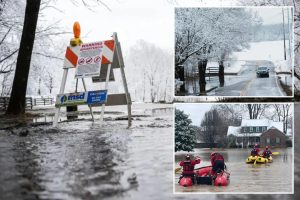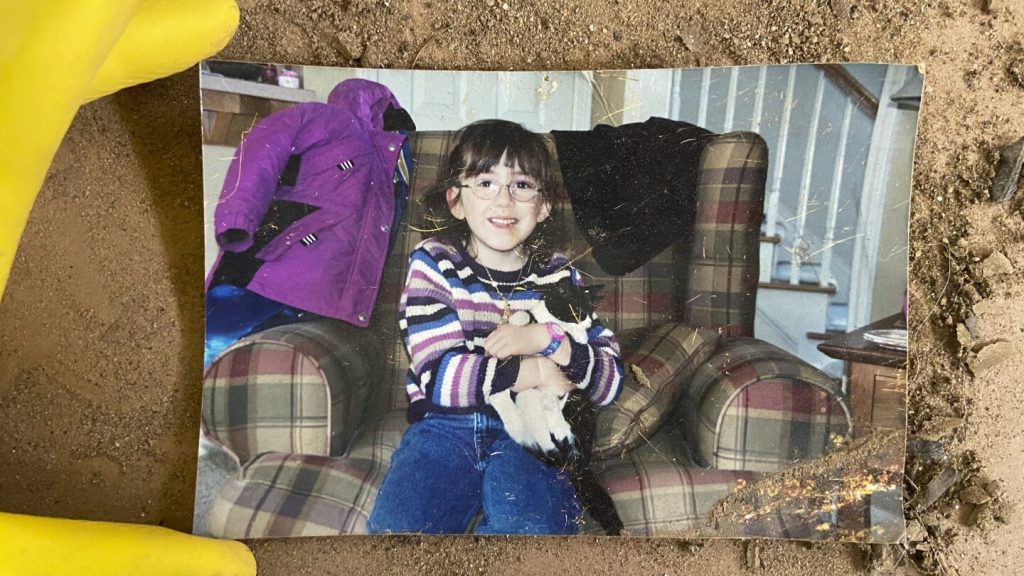Reuniting Memories Lost in Disaster: The Power of Compassion and Community
In the aftermath of natural disasters, communities are often left to grapple with the loss of not only homes and belongings but also cherished memories. Hurricanes, wildfires, and other catastrophic events can sweep away irreplaceable possessions, leaving families with a profound sense of loss. Yet, amidst such devastation, stories of hope and resilience emerge. This narrative delves into the remarkable efforts of two individuals, Taylor Schenker and Claire Schwartz, who dedicated themselves to reuniting families with their lost photographs, highlighting the enduring strength of human connection and the significance of preserving memories in the face of disaster.
Salvaging Memories from the Ashes: Taylor Schenker’s Journey in Asheville
In Asheville, North Carolina, the aftermath of Hurricane Helene revealed a landscape of destruction. Taylor Schenker, moved by the deluge of devastating images, decided to take action. While assisting a friend in searching for lost belongings, she stumbled upon several photos scattered by the floodwaters. These images, though mud-caked and weathered, captured moments of joy and love—family reunions, birthdays, weddings, and cherished portraits. Recognizing the emotional value of these photographs, Schenker was determined to reunite them with their rightful owners.
Schenker’s initiative quickly evolved into a structured effort. She created an Instagram account, “AshevilleFloodedPhotos,” as a platform to share the recovered images, hoping to connect them with their owners. She also set up a post-office box and collaborated with a volunteer search and rescue team. Over time, her efforts yielded over 500 photos, each a testament to the resilience of memories. Schenker’s first successful match brought her to tears, a moment she described as deeply moving. Her work not only restored photographs but also offered comfort to those who had lost so much.
One such recipient was Mary Moss, whose home was destroyed in the hurricane. Among the photos Schenker returned were those of Moss’s late son, Tommy, who had passed away at age 12. These images were more than just photographs; they were the only remaining evidence of Tommy’s existence. For Moss, receiving these photos was a poignant reminder of the memories that could never be replaced. Schenker’s efforts underscored the importance of preserving memories, especially in times of loss.
The Power of Recovered Photos: Claire Schwartz’s Mission in Los Angeles
Across the country, in the Altadena foothills of Los Angeles, Claire Schwartz embarked on a similar mission. Following the Eaton fire, she recognized the urgent need to salvage photographs before they were irreparably damaged by rain and ash. Schwartz, a former archival intern, understood the fragility of these memories and the importance of acting quickly. With a sense of responsibility, she gathered photos scattered across parks, yards, and even a golf course, determined to reunite them with their owners.
Schwartz’s process was meticulous. She stored the recovered photos in acid-free envelopes and kept them in a temperature-controlled environment to slow deterioration. Her efforts were soon recognized by the community, with residents directing her to found items. Her first successful match was a set of prom photos, which she returned to their overjoyed owner. Schwartz’s work not only restored memories but also highlighted the unexpected ways in which communities can come together during crises.
The challenges of this work were immense. Photos were often damaged, and the task of identifying owners seemed daunting. Yet, Schwartz remained committed, driven by the belief that these memories were worth saving. Her efforts, like Schenker’s, became a beacon of hope for those rebuilding their lives.
Challenges and Triumphs in Restoring Memories
Both Schenker and Schwartz faced significant challenges in their efforts to restore memories. photos were often brittle, moldy, or damaged beyond recognition. The process of preserving them required careful handling and specialized techniques. Luca Ackerman, a photo conservator, emphasized the importance of freezing damaged prints and avoiding contact with toxic substances. Despite these challenges, both women remained undeterred, recognizing the deeper significance of their work.
The emotional toll of this work was also profound. Schenker described the privilege of glimpsing into the intimate lives of strangers, while Schwartz reflected on the surreal experience of finding memories scattered across the landscape. For both, the triumphs were well worth the challenges. Each recovered photo was a testament to the enduring power of memories and the human spirit’s capacity for resilience.
A Glimmer of Hope Amidst Destruction
The stories of Schenker and Schwartz illustrate the transformative power of compassion and community in the aftermath of disaster. Their efforts not only restored memories but also fostered a sense of connection among those affected. For Mary Moss, receiving photos of her late son brought a sense of closure and comfort. For others, like Joshua Simpson, who found a photograph of his late mother-in-law, the recovered images offered a poignant reminder of loved ones and happier times.
These acts of kindness also highlighted the broader impact of disasters on communities. As Moss noted, while material possessions can be replaced, memories and photographs are irreplaceable. Schenker and Schwartz’s efforts became a source of hope, reminding those affected that even in the darkest moments, there is the potential for healing and rebuilding.
Healing Through Recovered Memories
The work of Taylor Schenker and Claire Schwartz serves as a powerful reminder of the importance of preserving memories, especially in the face of loss. Their efforts not only restored photographs but also offered a sense of continuity and connection for those rebuilding their lives. By salvaging these fragments of the past, they helped to create a bridge to the future, reminding us that even in the aftermath of disaster, there is the potential for healing and renewal.
As communities continue to rebuild, the stories of Schenker, Schwartz, and those they have helped will remain a testament to the enduring power of compassion and the human spirit. In the words of Mary Moss, “Disasters like this really bring out the best in people.” Through their efforts, these women have shown that even in the face of loss, memories can endure, offering a glimmer of hope and a reminder of the connections that bind us all.








